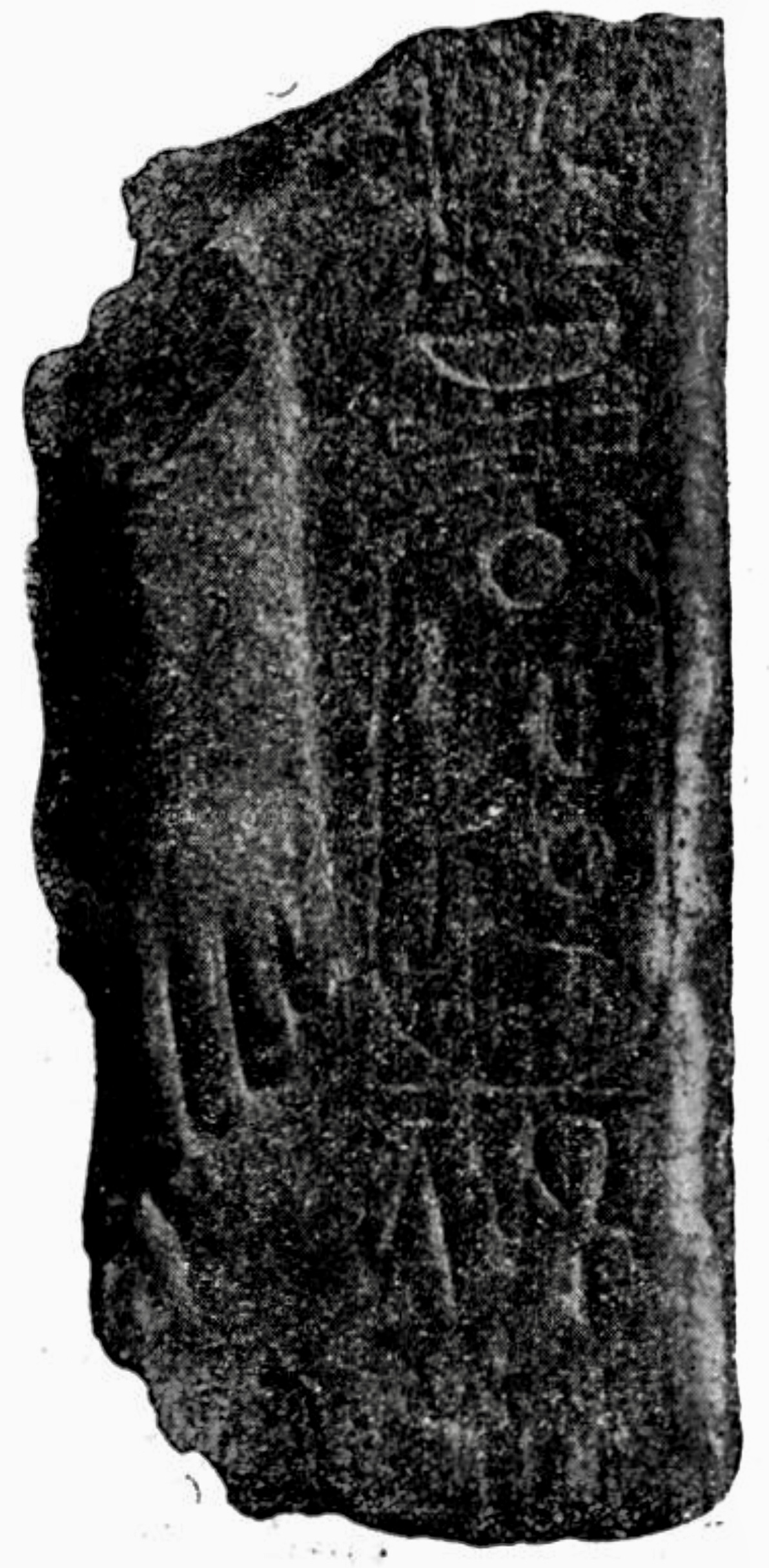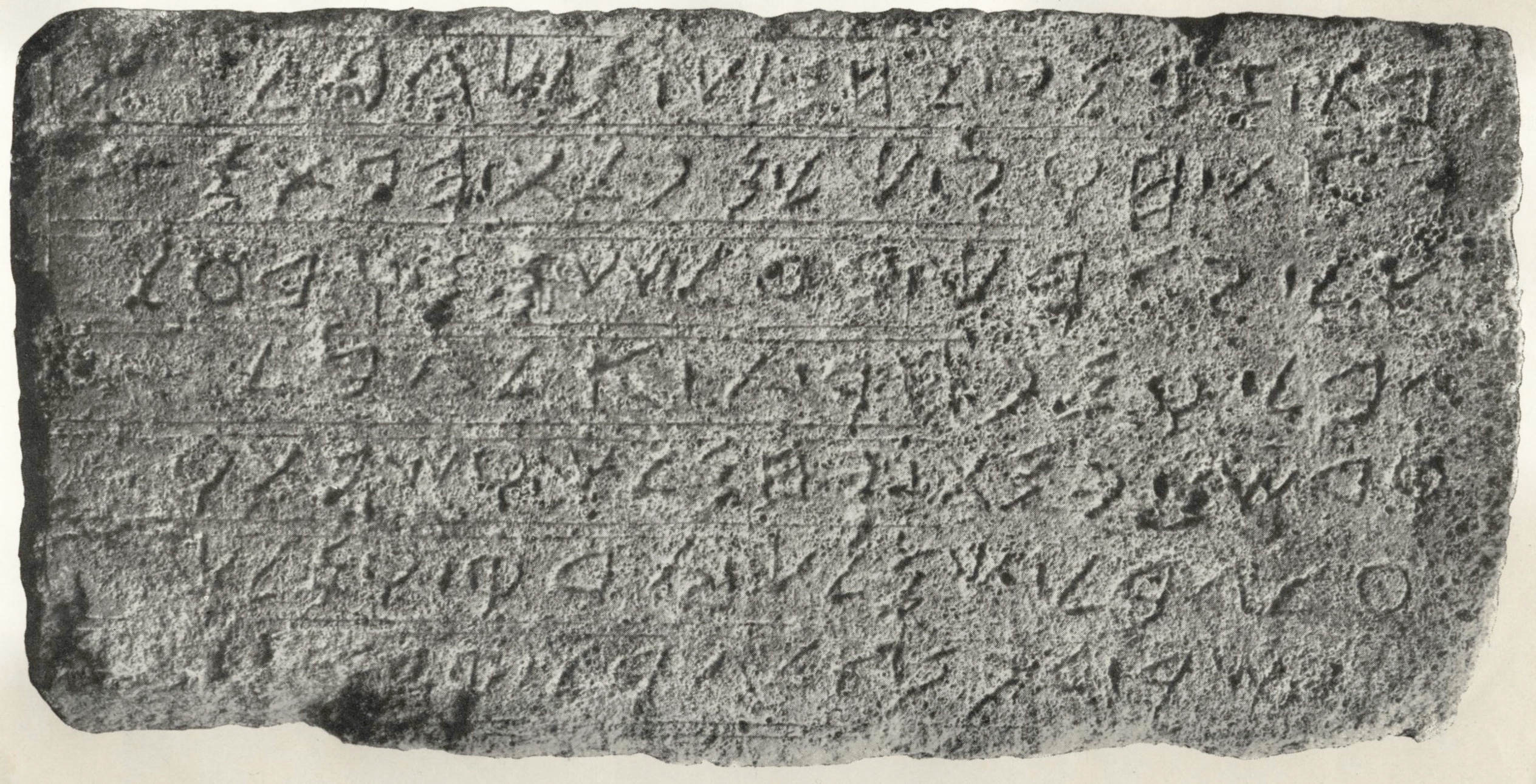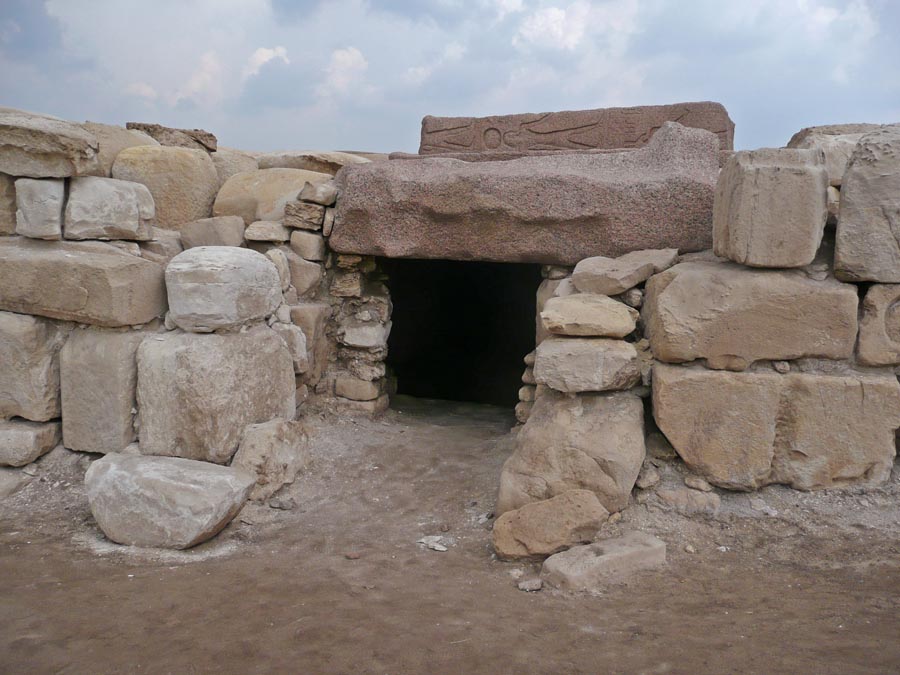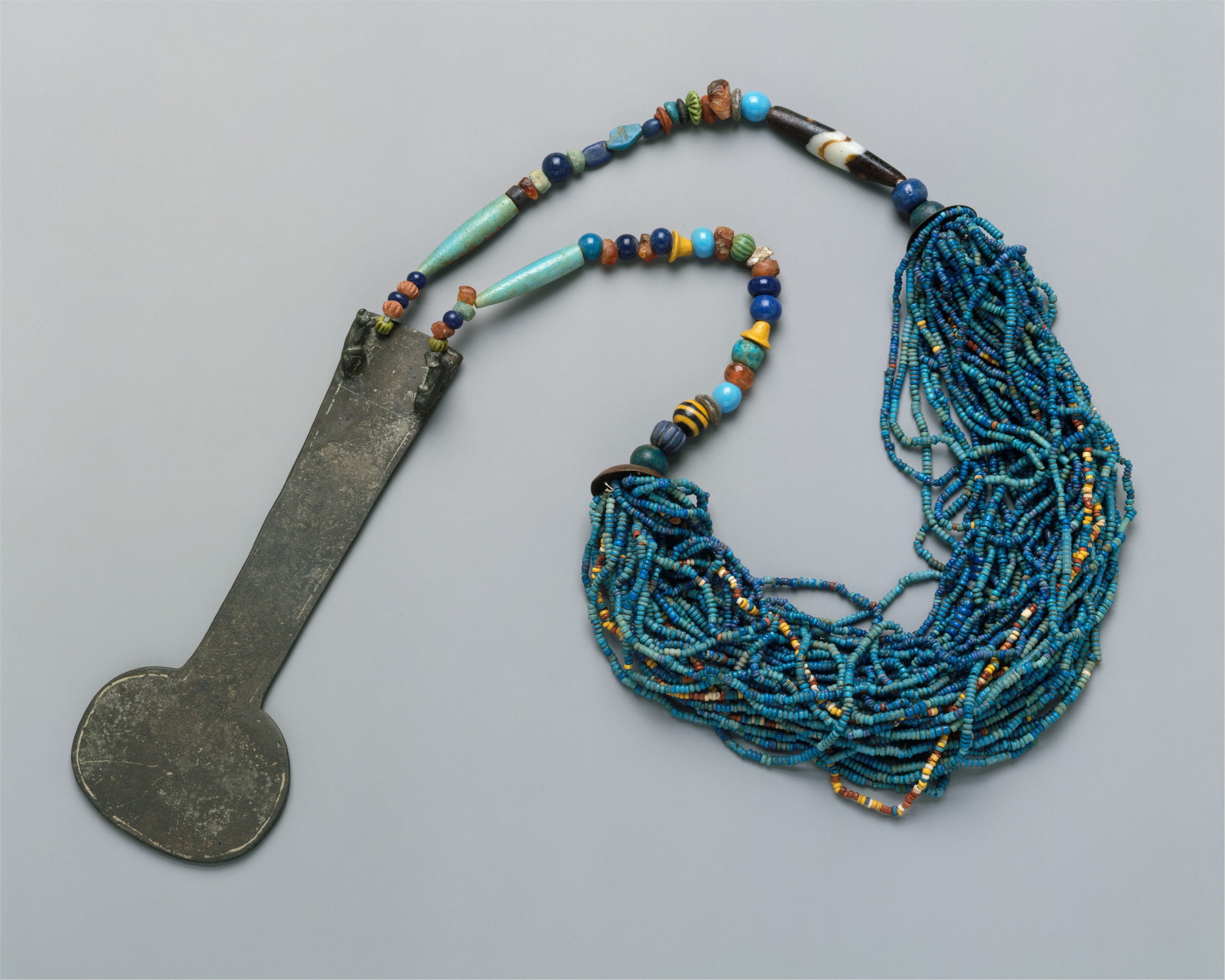|
Osorkon I
Sekhemkheperre Osorkon I was an ancient Egyptian pharaoh of the 22nd Dynasty. Osorkon's territory included much of the Levant. The Osorkon Bust found at Byblos is one of the five Byblian royal inscriptions. Biography According to the stela of Pasenhor, Osorkon I was the son of Shoshenq I and his chief consort Karomama A, and the second king of ancient Egypt's 22nd Dynasty who ruled around 922 BC – 887 BC. He succeeded his father Shoshenq I, who probably died within a year of his successful 923 BC campaign against the Philistines and the kingdom of Kingdom of Israel (Samaria), Israel. Osorkon I's reign is known for many temple building projects and was a long and prosperous period of Egypt's history. His highest known date is a "Year 33" date found on the bandage of Nakhtefmut's mummy, which held a menat-tab necklace inscribed with Osorkon I's Nomen (Ancient Egypt), nomen and Prenomen (Ancient Egypt), prenomen: ''Osorkon Sekhemkheperre''. This date can only belong to Osorkon I s ... [...More Info...] [...Related Items...] OR: [Wikipedia] [Google] [Baidu] |
Osorkon Bust
The Osorkon Bust, also known as the Eliba'l Inscription is a bust of Egyptian pharaoh Osorkon I, discovered in Byblos (in today's Lebanon) in the 19th century. Like the Tabnit sarcophagus from Sidon, it is decorated with two separate and unrelated inscriptions – one in Egyptian hieroglyphics and one in Phoenician script. It was created in the early 10th century BC, and was unearthed 1881, very likely in the Temple of Baalat Gebal. The Egyptian writing is the Prenomen (Ancient Egypt), prenomen of Osorkon, and the Phoenician is a dedication to Elibaal, the king of Byblos. The details of the find were published in by French archaeologist René Dussaud in 1925. The bust is made of quartzite, and is 60 cm × 36 cm × 37.5 cm. Discovery The first mention of the statue was by German archaeologist Alfred Wiedemann in 1884 in his ''Ägyptische Geschichte'': In English: "two fragments of a large stone statue have also been preserved [owned by Mr. :it:Meuricoffre, Meuricoffre at Naple ... [...More Info...] [...Related Items...] OR: [Wikipedia] [Google] [Baidu] |
Byblian Royal Inscriptions
The Byblian royal inscriptions are five inscriptions from Byblos written in an early type of Phoenician script, in the order of some of the kings of Byblos, all of which were discovered in the early 20th century. They constitute the largest corpus of lengthy Phoenician inscriptions from the area of the "Phoenician homeland"; it is the only major site in the region which has been excavated to pre-Hellenistic levels. The five royal inscriptions * The Ahiram Sarcophagus (KAI 1), discovered in 1923, together with two fragments of alabaster vases with the name of Ramesses II. Currently in the National Museum of Beirut. * The Yehimilk inscription (KAI 4) published in 1930. Currently in the museum of Byblos Castle. * The Abiba’l inscription (KAI 5), on a throne on which a statue of Sheshonq I was placed, found in 1895, published in 1903. Currently in the Vorderasiatisches Museum Berlin. * The Osorkon Bust or Eliba'l Inscription (KAI 6), inscribed on a statue of Osorkon I; know ... [...More Info...] [...Related Items...] OR: [Wikipedia] [Google] [Baidu] |
Jürgen Von Beckerath
Jürgen von Beckerath (19 February 1920 – 26 June 2016) was a German Egyptology, Egyptologist. He was a prolific writer who published countless articles in journals such as '':fr:Orientalia, Orientalia'', ''Göttinger Miszellen'' (GM), ''Journal of the American Research Center in Egypt'' (JARCE), '':de:Archiv für Orientforschung, Archiv für Orientforschung'' (AfO), and ''Studien zur Altägyptischen Kultur'' (SAK) among others. Together with Kenneth Kitchen, he is viewed as one of the foremost scholars on the New Kingdom of Egypt, New Kingdom and the Third Intermediate Period of Egypt. His many popular German-language publications include ''Handbuch der Ägyptischen Königsnamen'', 2nd edition (Mainz, 1999) and ''Chronologie des Pharaonischen Ägypten'' or "Chronology of the Egyptian Pharaohs," MÄS 46 (Philip von Zabern, Mainz: 1997), which is regarded by academics as one of the best and most comprehensive books on the chronology of Ancient Egypt and its various Pharaohs. In ... [...More Info...] [...Related Items...] OR: [Wikipedia] [Google] [Baidu] |
Meshwesh
The Meshwesh (often abbreviated in ancient Egyptian as Ma) was an ancient Libyan tribe, of Berber origin along with other groups like Libu and Tehenu/Tjemehu, and also some of the Sea Peoples. Early records of the Meshwesh date back to the Eighteenth Dynasty of Egypt from the reign of Amenhotep III (c. 1390 - 1350 BC). During the 19th and 20th dynasties (c. 1295 – 1075 BC), the Meshwesh were in almost constant conflict with the Egyptian state. During the late 21st Dynasty, increasing numbers of Meswesh Libyans began to settle in the Western Delta region of Egypt. They would ultimately take control of the country during the late 21st Dynasty first under Osorkon the Elder. After an interregnum of 38 years, during which the native Egyptian kings Siamun and Psusennes II assumed the throne, the Meshwesh ruled Egypt throughout the 22nd and 23rd Dynasties under many pharaohs as Shoshenq I, Osorkon I, Osorkon II, Shoshenq III and Osorkon III. Libyan origins That the Meshwesh ... [...More Info...] [...Related Items...] OR: [Wikipedia] [Google] [Baidu] |
Tanis, Egypt
Tanis ( ; ; ) or San al-Hagar (; ; ; or or ; ) is the Greek name for ancient Egyptian ''ḏꜥn.t'', an important archaeological site in the northeastern Nile Delta of Egypt, and the location of a city of the same name. Tanis was the capital of the Egyptian Kingdom in its 21st and 22nd Dynasties. It is located on the Tanitic branch of the Nile, which has long since silted up. History Tanis is unattested before the 19th Dynasty of Egypt, when it was the capital of the 14th nome of Lower Egypt. A temple inscription datable to the reign of Ramesses II mentions a "Field of Tanis", while the city ''in se'' is securely attested in two 20th Dynasty documents: the Onomasticon of Amenope and the Story of Wenamun, as the home place of the pharaoh-to-be Smendes. The earliest known Tanite buildings are datable to the 21st Dynasty. Although some monuments found at Tanis are datable earlier than the 21st Dynasty, most of these were in fact brought there from nearby cities, main ... [...More Info...] [...Related Items...] OR: [Wikipedia] [Google] [Baidu] |
Shoshenq II
The designation Shoshenq II is variously associated by scholars with several different Egyptian royal names, most commonly Heqakheperre Shoshenq IIa, discussed below, but also Tutkheperre Shoshenq IIb and Maatkheperre Shoshenq IIc, and is sometimes applied to the High Priest of Amun Shoshenq Q. Heqakheperre-setepenre Shoshenq-meryamun (Egyptian ''ḥqȝ-ḫpr-rʿ stp-n-rʿ ššnq mrj-jmn''), arbitrarily designated Shoshenq IIa, was a pharaoh of the 22nd Dynasty. King Heqakheperre Shoshenq is known entirely from his funerary effects, discovered in his reburial at Tanis by Pierre Montet in 1939. Scholars disagree as to the identity and chronological placement of the king. The royal throne name or prenomen, Heqakheperre Setepenre, has been interpreted as "The manifestation of Ra rules, the chosen one of Ra," or as "The ruler is the (very) manifestation of Ra, the chosen one of Ra." Evidence from burial The only ruler of this dynasty whose burial was not plundered by tomb ro ... [...More Info...] [...Related Items...] OR: [Wikipedia] [Google] [Baidu] |
Peter A
Peter may refer to: People * List of people named Peter, a list of people and fictional characters with the given name * Peter (given name) ** Saint Peter (died 60s), apostle of Jesus, leader of the early Christian Church * Peter (surname), a surname (including a list of people with the name) Culture * Peter (actor) (born 1952), stage name Shinnosuke Ikehata, a Japanese dancer and actor * ''Peter'' (1934 film), a film directed by Henry Koster * ''Peter'' (2021 film), a Marathi language film * "Peter" (''Fringe'' episode), an episode of the television series ''Fringe'' * ''Peter'' (novel), a 1908 book by Francis Hopkinson Smith * "Peter" (short story), an 1892 short story by Willa Cather * ''Peter'' (album), a 1972 album by Peter Yarrow * ''Peter'', a 1993 EP by Canadian band Eric's Trip * "Peter", 2024 song by Taylor Swift from '' The Tortured Poets Department: The Anthology'' Animals * Peter (Lord's cat), cat at Lord's Cricket Ground in London * Peter (chief mouser), ... [...More Info...] [...Related Items...] OR: [Wikipedia] [Google] [Baidu] |
Manetho
Manetho (; ''Manéthōn'', ''gen''.: Μανέθωνος, ''fl''. 290–260 BCE) was an Egyptian priest of the Ptolemaic Kingdom who lived in the early third century BCE, at the very beginning of the Hellenistic period. Little is certain about his life. He is known today as the author of a history of Egypt in Greek called the '' Aegyptiaca'' (''History of Egypt''), written during the reign of Ptolemy I Soter or Ptolemy II Philadelphus (285–246 BCE). None of Manetho’s original texts have survived; they are lost literary works, known only from fragments transmitted by later authors of classical and late antiquity. The remaining fragments of the ''Aegyptiaca'' continue to be a singular resource for delineating Egyptian chronology, more than two millennia since its composition. Until the decipherment of Ancient Egyptian scripts in the early 19th century CE, Manetho's fragments were an essential source for understanding Egyptian history. His work remains of unique importan ... [...More Info...] [...Related Items...] OR: [Wikipedia] [Google] [Baidu] |
Osorkon II
Usermaatre Setepenamun Osorkon II was the fifth pharaoh, king of the Twenty-second dynasty of Egypt, Twenty-second Dynasty of Ancient Egypt and the son of King Takelot I and Queen Kapes. He ruled Egypt from approximately 872 BC to 837 BC from Tanis, Egypt, Tanis, the capital of that dynasty. After succeeding his father, Osorkon II was faced with the competing rule of his cousin, King Harsiese A, who controlled both Thebes, Egypt, Thebes and the Western Oasis of Egypt. Potentially, Harsiese's kingship could have posed a serious challenge to the authority of Osorkon, however, when Harsiese died in 860 BC, Osorkon II acted to ensure that no king would replace Harsiese. He appointed his son, Nimlot C, as the Theban High Priests of Amun (Twenty-first dynasty), high priest of Amun at Thebes, which would have been the source for a successor to Harsiese. This consolidated the king's authority over Upper Egypt and thereafter, Osorkon II ruled over a united Egypt. Osorkon II's reign was a ... [...More Info...] [...Related Items...] OR: [Wikipedia] [Google] [Baidu] |
Prenomen (Ancient Egypt)
The prenomen, also called cartouche name or throne name ( "of the Upper and Lower Egypt, Sedge and Bee") of ancient Egypt, was one of the ancient Egyptian royal titulary, five royal names of pharaohs. The first pharaoh to have a Sedge and Bee name was Den (pharaoh), Den during the First Dynasty of Egypt, First Dynasty. Most Egyptologists believe that the prenomen was a regnal name. Others think that it originally represented the birth name of the rulers. The term "of the Sedge and Bee" is written by the hieroglyphs representing a sedge, representing Upper Egypt (𓇓 Gardiner's sign list, Gardiner M23) and a bee, representing Lower Egypt (𓆤 L2), each combined with the feminine ending ''t'' (𓏏 X1), read as ''nsw.t'' and ''bj.t'' respectively; the adjectival Afroasiatic languages#Similarities in grammar, syntax, and morphology, nisba ending ''-j'' is not represented in writing. During the first three dynasties, the prenomen was depicted either alone or in pair with the Nebty ... [...More Info...] [...Related Items...] OR: [Wikipedia] [Google] [Baidu] |
Nomen (Ancient Egypt)
The nomen of ancient Egyptian pharaohs was one of the " great five names". It was introduced by king Djedefre, third pharaoh of the 4th Dynasty, as an emendation to the traditional ''nswt-bity'' crest. The nomen was later separated from the prenomen to become an independent royal name.Stephen Quirke: ''The Cult of Ra: Sun-worship in Ancient Egypt''. Thames & Hudson, 2001, , p. 59-51. Heraldic appearance The title ''Sa-Rê'', literally meaning "Son of Ra", was written with the sign of a sun-disc and that of a goose placed below. At the beginning, the sun and goose signs were placed at the end of the cartouche containing the name of the king. This was read as: "King of Lower- and Upper Egypt, king XXX, son of Râ". Later it was placed before the cartouche, introducing the nomen of the king and now read as: "Son of Râ, king XXX". The hieroglyphs forming the nomen itself were placed inside the cartouche. Symbology Under the reign of the Fourth Dynasty king Djedefre, the c ... [...More Info...] [...Related Items...] OR: [Wikipedia] [Google] [Baidu] |
Menat
In ancient Egyptian religion, a menat (, ) was a necklace closely associated with the goddess Hathor. Operation The menat was held in the hand by its counterpoise and used as a Rattle (percussion instrument), rattle by Hathor's priestesses. It was also worn as a protective amulet, particularly by Apis (deity), Apis bulls. Parts The menat typically included an aegis attached to beaded strings. The other ends of the strings were tied to a counterweight that dangled on the wearer's back. The aegis was often made of Egyptian faience, faience, but other materials such as leather and bronze were also used. It was often inscribed or bore depictions of deities associated with Hathor. Purpose The necklace was meant to ensure good luck and fortune and to protect against evil spirits. It was also worn for protection in the afterlife and is often found buried with the dead, given as a grave gift since Ramesside Period, Ramesside times. It was expected to foster fruitfulness and good healt ... [...More Info...] [...Related Items...] OR: [Wikipedia] [Google] [Baidu] |









